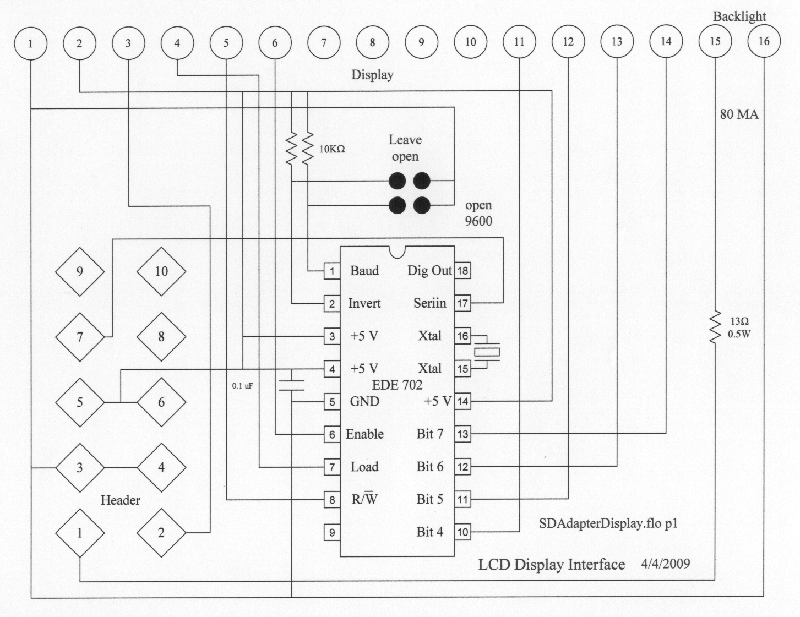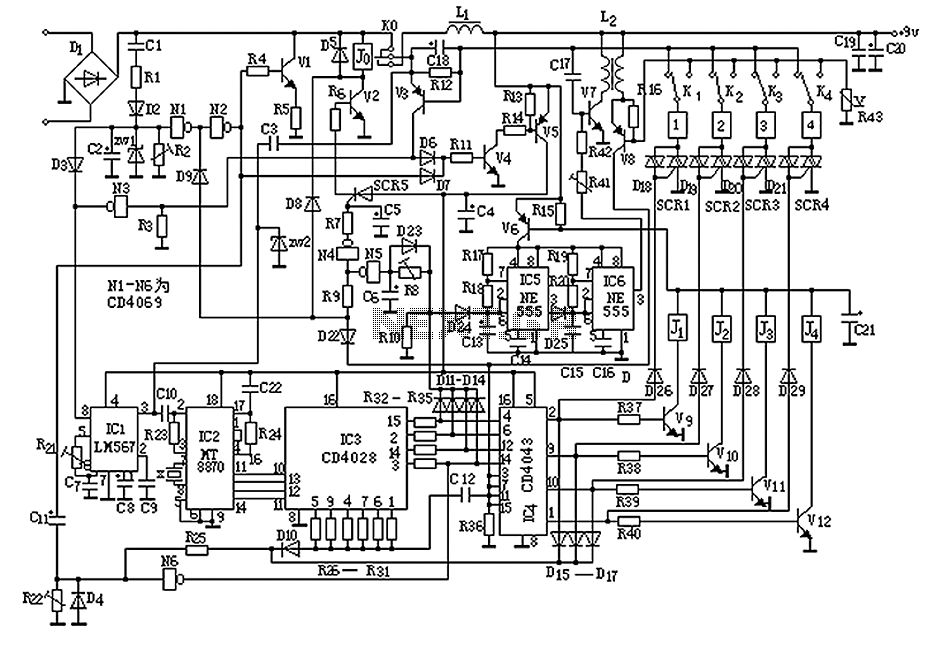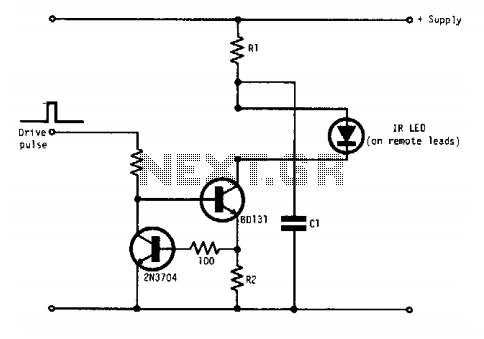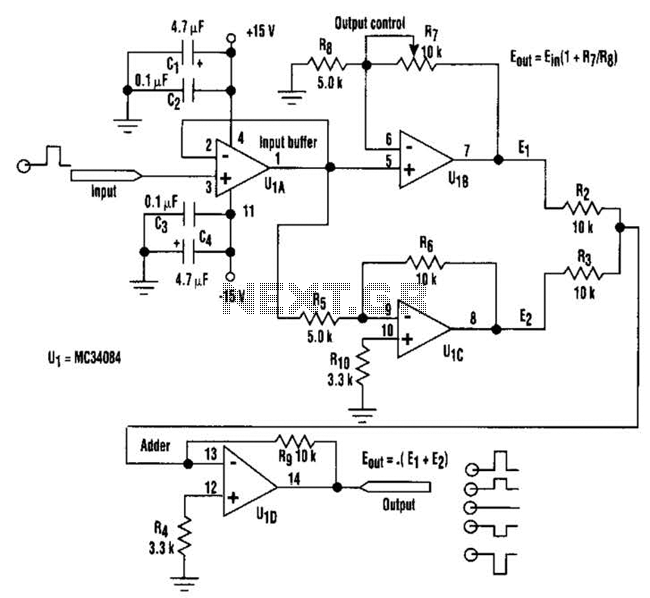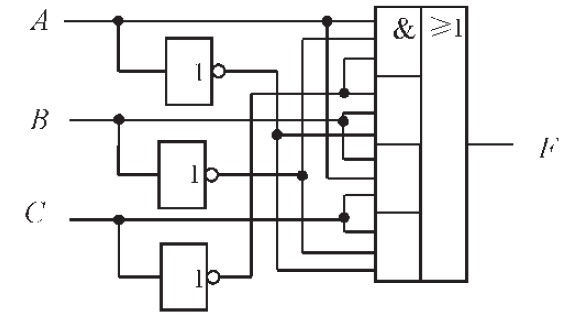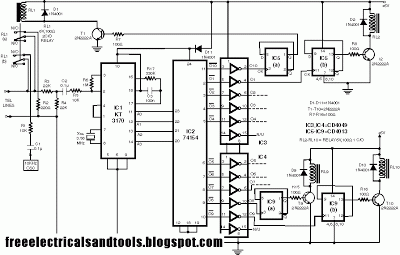
Low-noise pre-equalizer circuit
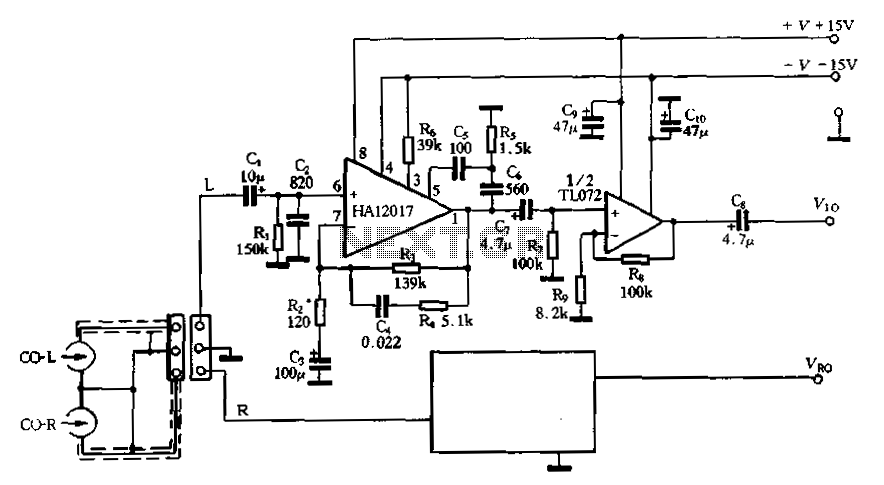
Figure 3-16 illustrates a low-noise preamplifier equalizing circuit using the HA12017. This circuit includes playback components R3, R4, and C4, which conform to a standard balanced network. The gain of the circuit is -7dB at 1kHz, while the output signal level at the head is 65.7 mV at 1kHz. The pre-equalizer circuit output level is 27dB, which is insufficient for the typical input level of a 10dB power amplifier circuit. Therefore, an additional amplifier stage with a 20dB amplification capability is necessary to bridge this gap. Suitable operational amplifiers for this stage include the TL072, TL082, and NE5532. The HA12017 can be utilized not only in pre-equalizer circuits for tape sound recording but also in electromagnetic RIAA phono pre-equalizer circuits, with adjustments made to the RC network as needed.
The low-noise preamplifier circuit depicted in Figure 3-16 is designed to enhance audio signals while minimizing unwanted noise. The HA12017 integrated circuit serves as the primary amplification component, ensuring high fidelity in audio playback. The inclusion of resistors R3 and R4, along with capacitor C4, establishes a balanced network configuration that optimizes the signal path and reduces interference.
The circuit's gain of -7dB at 1kHz indicates that it is configured to attenuate the input signal slightly, which is typical for certain preamplifier applications. However, the output signal level of 65.7 mV at 1kHz suggests that the circuit is capable of producing a usable signal for subsequent processing stages. The pre-equalizer output level of 27dB indicates that the circuit is not adequately amplifying the signal to meet the standard input requirements of a 10dB power amplifier, necessitating the addition of a secondary amplification stage.
To address the amplification deficiency, a voltage amplification stage with a gain of 20dB is recommended. This additional stage can be implemented using operational amplifiers such as the TL072, TL082, or NE5532, which are well-suited for audio applications due to their low noise characteristics and high slew rates. The choice of operational amplifier will depend on specific design requirements, including bandwidth, power supply voltage, and load conditions.
Furthermore, the versatility of the HA12017 allows it to be used in various audio applications beyond tape sound recording. By modifying the RC network, the circuit can be adapted for use in RIAA phono pre-equalizer configurations, which are essential for processing signals from vinyl records. This adaptability highlights the importance of selecting appropriate component values in the RC network to ensure proper frequency response and equalization tailored to the specific audio source.
Overall, the design of this low-noise preamplifier equalizing circuit demonstrates a comprehensive approach to audio signal processing, combining effective amplification with flexibility for various applications in the audio domain.Figure 3-16 is a low-noise preamplifier equalizing HA12017 consisting playback circuit, the circuit R3, R4 and C4, in line with standard maggots balanced network. The gain stag e circuit 38 - 7dB (1kFk), the head output signal is a 65,7 Pi (1kH), pre-equalizer circuit output level of a 27dBo which for most standard input level of a 10dB power amp circuit is not enough, so there is need to add a voltage level of the amplifier stage 20dB amplification capability to fill the gap. Put this big stage can TL072, TL082 and NE5532 to serve O HA12017 applies not only to pre-equalizer circuit tape sound recording, but also applies to the electromagnetic RIAA phono pre-equalizer circuit.
Then just change the RC network.
The low-noise preamplifier circuit depicted in Figure 3-16 is designed to enhance audio signals while minimizing unwanted noise. The HA12017 integrated circuit serves as the primary amplification component, ensuring high fidelity in audio playback. The inclusion of resistors R3 and R4, along with capacitor C4, establishes a balanced network configuration that optimizes the signal path and reduces interference.
The circuit's gain of -7dB at 1kHz indicates that it is configured to attenuate the input signal slightly, which is typical for certain preamplifier applications. However, the output signal level of 65.7 mV at 1kHz suggests that the circuit is capable of producing a usable signal for subsequent processing stages. The pre-equalizer output level of 27dB indicates that the circuit is not adequately amplifying the signal to meet the standard input requirements of a 10dB power amplifier, necessitating the addition of a secondary amplification stage.
To address the amplification deficiency, a voltage amplification stage with a gain of 20dB is recommended. This additional stage can be implemented using operational amplifiers such as the TL072, TL082, or NE5532, which are well-suited for audio applications due to their low noise characteristics and high slew rates. The choice of operational amplifier will depend on specific design requirements, including bandwidth, power supply voltage, and load conditions.
Furthermore, the versatility of the HA12017 allows it to be used in various audio applications beyond tape sound recording. By modifying the RC network, the circuit can be adapted for use in RIAA phono pre-equalizer configurations, which are essential for processing signals from vinyl records. This adaptability highlights the importance of selecting appropriate component values in the RC network to ensure proper frequency response and equalization tailored to the specific audio source.
Overall, the design of this low-noise preamplifier equalizing circuit demonstrates a comprehensive approach to audio signal processing, combining effective amplification with flexibility for various applications in the audio domain.Figure 3-16 is a low-noise preamplifier equalizing HA12017 consisting playback circuit, the circuit R3, R4 and C4, in line with standard maggots balanced network. The gain stag e circuit 38 - 7dB (1kFk), the head output signal is a 65,7 Pi (1kH), pre-equalizer circuit output level of a 27dBo which for most standard input level of a 10dB power amp circuit is not enough, so there is need to add a voltage level of the amplifier stage 20dB amplification capability to fill the gap. Put this big stage can TL072, TL082 and NE5532 to serve O HA12017 applies not only to pre-equalizer circuit tape sound recording, but also applies to the electromagnetic RIAA phono pre-equalizer circuit.
Then just change the RC network.
